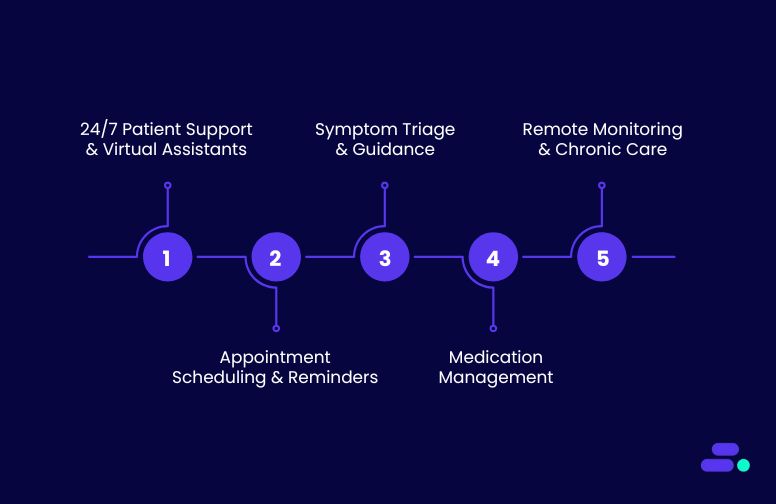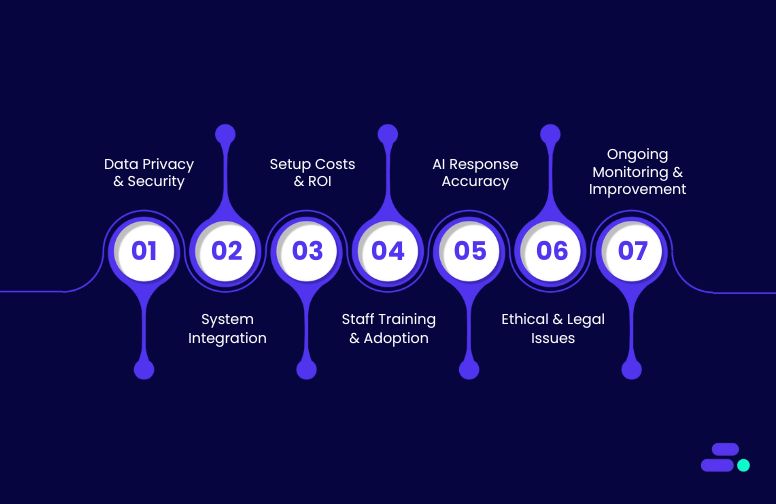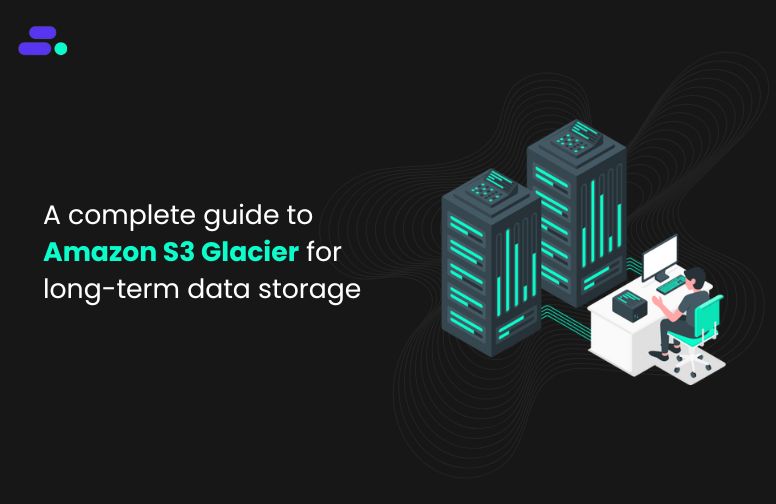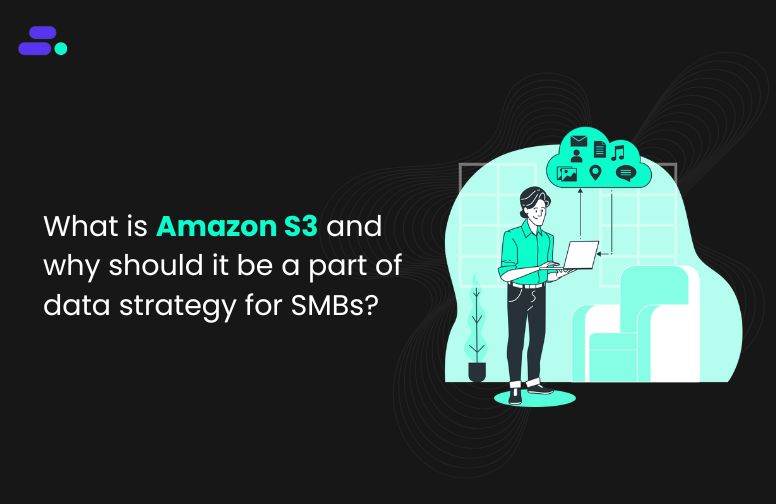This is a div block with a Webflow interaction that will be triggered when the heading is in the view.

Modernize your cloud. Maximize business impact.
Every business that moves its operations to the cloud faces a harsh reality: one misconfigured permission can expose sensitive data or disrupt critical services. For businesses, AWS security is not simply a consideration but a fundamental element that underpins operational integrity, customer confidence, and regulatory compliance. With the growing complexity of cloud environments, even a single gap in access control or policy structure can open the door to costly breaches and regulatory penalties.
A well-designed AWS Cloud Security policy brings order and clarity to access management. It defines who can do what, where, and under which conditions, reducing risk and supporting compliance requirements. By establishing clear standards and reusable templates, businesses can scale securely, respond quickly to audits, and avoid the pitfalls of ad-hoc permissions.
Key Takeaways
- Enforce Least Privilege: Define granular IAM roles and permissions; require multi-factor authentication and restrict root account use.
- Mandate Encryption Everywhere: Encrypt all S3, EBS, and RDS data at rest and enforce TLS 1.2+ for data in transit.
- Automate Monitoring & Compliance: Enable CloudTrail and AWS Config in all regions; centralize logs and set up CloudWatch alerts for suspicious activity.
- Isolate & Protect Networks: Design VPCs for workload isolation, use strict security groups, and avoid open “0.0.0.0/0” rules.
- Regularly Review & Remediate: Schedule policy audits, automate misconfiguration fixes, and update controls after major AWS changes.
What is an AWS Cloud Security policy?
An AWS Cloud Security policy is a set of explicit rules and permissions that define who can access specific AWS resources, what actions they can perform, and under what conditions these actions can be performed. These policies are written in JSON and are applied to users, groups, or roles within AWS Identity and Access Management (IAM).
They control access at a granular level, specifying details such as which Amazon S3 buckets can be read, which Amazon EC2 instances can be started or stopped, and which API calls are permitted or denied. This fine-grained control is fundamental to maintaining strict security boundaries and preventing unauthorized actions within an AWS account.
Beyond access control, these policies can also enforce compliance requirements, such as PCI DSS, HIPAA, and GDPR, by mandating encryption for stored data and restricting network access to specific IP ranges, including trusted corporate or VPN addresses and AWS’s published service IP ranges..
AWS Cloud Security policies are integral to automated security monitoring, as they can trigger alerts or block activities that violate organizational standards. By defining and enforcing these rules, organizations can systematically reduce risk and maintain consistent security practices across all AWS resources.
Key elements of a strong AWS Cloud Security policy
A strong AWS Cloud Security policy starts with precise permissions, enforced conditions, and clear boundaries to protect business resources.
- Precise permission boundaries based on the principle of least privilege:
Limiting user, role, and service permissions to only what is necessary helps prevent both accidental and intentional misuse of resources.
- Grant only necessary actions for users, roles, or services.
- Explicitly specify allowed and denied actions, resource Amazon Resource Names, and relevant conditions (such as IP restrictions or encryption requirements).
- Carefully scoped permissions reduce the risk of unwanted access.
- Use of policy conditions and multi-factor authentication enforcement:
Requiring extra security checks for sensitive actions and setting global controls across accounts strengthens protection for critical operations.
- Require sensitive actions (such as deleting resources or accessing critical data) only under specific circumstances, like approved networks or multi-factor authentication presence.
- Apply service control policies at the AWS Organization level to set global limits on actions across accounts.
- Layered governance supports compliance and operational needs without overexposing resources.
Clear, enforceable policies lay the groundwork for secure access and resource management in AWS. Once these principles are established, organizations can move forward with a policy template that fits their specific requirements.
How to create an AWS Cloud Security policy?
A comprehensive AWS Cloud Security policy establishes the framework for protecting businesses' cloud infrastructure, data, and operations. These specific requirements and considerations for AWS environments are necessary while maintaining practical implementation guidelines.
Step 1: Establish the foundation and scope
Define the purpose and scope of the AWS Cloud Security policy. Clearly outline the environments (private, public, hybrid) covered by the policy, and specify which departments, systems, data types, and users are included.
This ensures the policy is focused, relevant, and aligned with the business's goals and compliance requirements.
Step 2: Conduct a comprehensive risk assessment
Conduct a comprehensive risk assessment to identify, assess, and prioritize potential threats. Begin by inventorying all cloud-hosted assets, data, applications, and infrastructure, and assessing their vulnerabilities.
Categorize risks by severity and determine appropriate mitigation strategies, considering both technical risks (data breaches, unauthorized access) and business risks (compliance violations, service disruptions). Regular assessments should be performed periodically and after major changes.
Step 3: Define security requirements and frameworks
Establish clear security requirements in line with industry standards and frameworks such as ISO/IEC 27001, NIST SP 800-53, and relevant regulations (GDPR, HIPAA, PCI-DSS).
Specify compliance with these standards and design the security controls (access management, encryption, MFA, firewalls) that will govern the cloud environment. This framework should address both technical and administrative controls for protecting assets.
Step 4: Develop detailed security guidelines
Create actionable security guidelines to implement across the business's cloud environment. These should cover key areas:
- Identity and Access Management (IAM): Implement role-based access controls (RBAC) and enforce the principle of least privilege. Use multi-factor authentication (MFA) for all cloud accounts, especially administrative accounts.
- Data protection: Define encryption requirements for data at rest and in transit, establish data classification standards, and implement backup strategies.
- Network security: Use network segmentation, firewalls, and secure communication protocols to limit exposure and protect businesses' cloud infrastructure.
The guidelines should be clear and provide specific, actionable instructions for all stakeholders.
Step 5: Establish a governance and compliance framework
Design a governance structure that assigns specific roles and responsibilities for AWS Cloud Security management. Ensure compliance with industry regulations and establish continuous monitoring processes.
Implement regular audits to validate the effectiveness of business security controls, and develop change management procedures for policy updates and security operations.
Step 6: Implement incident response procedures
Develop a detailed incident response plan with four key components: preparation, detection, containment, eradication, and recovery. Define roles and responsibilities for the incident response team and document escalation procedures. AWS Security Hub or Amazon Detective is used for real-time correlation and investigation.
Automate playbooks for common incidents and ensure regular training for the response team to ensure consistent and effective responses. Store the plan in secure, highly available storage, and review it regularly to keep it up to date.
Step 7: Deploy enforcement and monitoring mechanisms
Implement tools and processes to enforce compliance with business's AWS Cloud Security policies. Use automated policy enforcement frameworks, such as AWS Config or Azure Policy, to ensure consistency across cloud resources.
Deploy continuous monitoring solutions, including SIEM systems, to analyze security logs and provide real-time visibility. Set up key performance indicators (KPIs) to assess the effectiveness of security controls and policy compliance.
Step 8: Provide training and awareness programs
Develop comprehensive training programs for all employees, from basic security awareness for general users to advance AWS Cloud Security training for IT staff. Focus on educating personnel about recognizing threats, following security protocols, and responding to incidents.
Regularly update training content to reflect emerging threats and technological advancements. Encourage certifications, like AWS Certified Security Specialty, to validate expertise.
Step 9: Establish review and maintenance processes
Create a process for regularly reviewing and updating the business's AWS Cloud Security policy. Schedule periodic reviews to ensure alignment with evolving organizational needs, technologies, and regulatory changes.
Implement a feedback loop to gather input from stakeholders, perform internal and external audits, and address any identified gaps. Use audit results to update and improve their security posture, maintaining version control for all policy documents.
Creating a clear and enforceable security policy is the foundation for controlling access and protecting the AWS environment. Understanding why these policies matter helps prioritize their design and ongoing management within the businesses.
Why is an AWS Cloud Security policy important?
AWS Cloud Security policies serve as the authoritative reference for how an organization protects its data, workloads, and operations in cloud environments. Their importance stems from several concrete factors:
- Ensures regulatory compliance and audit readiness
AWS Cloud Security policies provide the documentation and controls required to comply with regulations like GDPR, HIPAA, and PCI DSS.
During audits or investigations, this policy serves as the authoritative reference that demonstrates your cloud infrastructure adheres to legal and industry security standards, thereby reducing the risk of fines, data breaches, or legal penalties.
- Standardizes security across the cloud environment
A clear policy enforces consistent configuration, access management, and encryption practices across all AWS services. This minimizes human error and misconfigurations—two of the most common causes of cloud data breaches—and ensures security isn't siloed or left to chance across departments or teams.
- Defines roles, responsibilities, and accountability
The AWS shared responsibility model splits security duties between AWS and the customer. A well-written policy clarifies who is responsible for what, from identity and access control to incident response, ensuring no task falls through the cracks and that all security functions are owned and maintained.
- Strengthens risk management and incident response
By requiring regular risk assessments, the policy enables organizations to prioritize protection for high-value assets. It also lays out structured incident response playbooks for detection, containment, and recovery—helping teams act quickly and consistently in the event of a breach.
- Guides Secure Employee and Vendor Behavior
Security policies establish clear expectations regarding password hygiene, data sharing, the use of personal devices, and controls over third-party vendors. They help prevent insider threats, enforce accountability, and ensure that external partners don’t compromise your security posture.
A strong AWS Cloud Security policy matters because it defines how security and compliance responsibilities are divided between the customer and AWS, making the shared responsibility model clear and actionable for your organization.
What is the AWS shared responsibility model?

The AWS shared responsibility model is the foundation of any AWS security policy. AWS is responsible for the security of the cloud, which covers the physical infrastructure, hardware, software, networking, and facilities running AWS services. Organizations are responsible for security in the cloud, which includes managing data, user access, and security controls for their applications and services.
1. Establishing identity and access management foundations
Building a strong identity and access management in AWS starts with clear policies and practical security habits. The following points outline how organizations can create, structure, and maintain effective access controls.
Creating AWS Identity and Access Management policies
Organizations can create customer-managed policies in three ways:
- JavaScript Object Notation method: Paste and customize example policies. The editor validates syntax, and AWS Identity and Access Management Access Analyzer provides policy checks and recommendations.
- Visual editor method: Build policies without JavaScript Object Notation knowledge by selecting services, actions, and resources in a guided interface.
- Import method: Import and tailor existing managed policies from your account.
Policy structure and best practices
Effective AWS Identity and Access Management policies rely on a clear structure and strict permission boundaries to keep access secure and manageable. The following points highlight the key elements and recommended practices:
- Policies are JavaScript Object Notation documents with statements specifying effect (Allow or Deny), actions, resources, and conditions.
- Always apply the principle of least privilege: grant only the permissions needed for each role or task.
- Use policy validation to ensure effective, least-privilege policies.
Identity and Access Management security best practices
Maintaining strong access controls in AWS requires a disciplined approach to user permissions, authentication, and credential hygiene. The following points outline the most effective practices:
- User management: Avoid wildcard permissions and attaching policies directly to users. Use groups for permissions. Rotate access keys every ninety days or less. Do not use root user access keys.
- Multi-factor authentication: Require multi-factor authentication for all users with console passwords and set up hardware multi-factor authentication for the root user. Enforce strong password policies.
- Credential management: Regularly remove unused credentials and monitor for inactive accounts.
2. Network security implementation
Effective network security in AWS relies on configuring security groups as virtual firewalls and following Virtual Private Cloud best practices for availability and monitoring. The following points outline how organizations can set up and maintain secure, resilient cloud networks.
Security groups configuration
Amazon Elastic Compute Cloud security groups act as virtual firewalls at the instance level.
- Rule specification: Only allowed rules are supported. No inbound traffic is allowed by default; outbound traffic is allowed unless restricted.
- Multi-group association: Resources can belong to multiple security groups; rules are combined.
- Rule management: Changes apply automatically to all associated resources. Use unique rule identifiers for easier management.
Virtual Private Cloud security best practices
Securing an AWS Virtual Private Cloud involves deploying resources across multiple zones, controlling network access at different layers, and continuously monitoring network activity. The following points highlight the most effective strategies:
- Multi-availability zone deployment: Use subnets in multiple zones for high availability and fault tolerance.
- Network access control: Use security groups for instance-level control and network access control lists for subnet-level control.
- Monitoring and analysis: Enable Virtual Private Cloud Flow Logs to monitor traffic. Use Network Access Analyzer and AWS Network Firewall for advanced analysis and filtering.
3. Data protection and encryption
Protecting sensitive information in AWS involves encrypting data both at rest and in transit, tightly controlling access, and applying encryption at the right levels to meet security and compliance needs.
Encryption implementation
Encrypting data both at rest and in transit is essential to protect sensitive information, with access tightly controlled through AWS permissions and encryption applied at multiple levels as needed.
- Encrypt data at rest and in transit.
- Limit access to confidential data using AWS permissions.
- Apply encryption at the file, partition, volume, or application level as needed.
Amazon Simple Storage Service security
Securing Amazon Simple Storage Service (Amazon S3) involves blocking public access, enabling server-side encryption with managed keys, and activating access logging to monitor data usage and changes.
- Public access controls: Enable Block Public Access at both account and bucket levels.
- Server-side encryption: Enable for all buckets, using AWS-managed or customer-managed keys.
- Access logging: Enable logs for sensitive buckets to track all data access and changes.
4. Monitoring and logging implementation
Effective monitoring and logging in AWS combine detailed event tracking with real-time analysis to maintain visibility and control over cloud activity.
AWS CloudTrail configuration
Setting up AWS CloudTrail trails ensures a permanent, auditable record of account activity across all regions, with integrity validation to protect log authenticity.
- Trail creation: Set up trails for ongoing event records. Without trails, only ninety days of history are available.
- Multi-region trails: Capture activity across all regions for complete audit coverage.
- Log file integrity: Enable integrity validation to ensure logs are not altered.
Centralized monitoring approach
Integrating AWS CloudTrail with Amazon CloudWatch, Amazon GuardDuty, and AWS Security Hub enables automated threat detection, real-time alerts, and unified compliance monitoring.
- Amazon CloudWatch integration: Integrate AWS CloudTrail with Amazon CloudWatch Logs for real-time monitoring and alerting.
- Amazon GuardDuty utilization: Use for automated threat detection and prioritization.
- AWS Security Hub implementation: Centralizes security findings and compliance monitoring.
Knowing how responsibilities are divided helps create a comprehensive security policy that protects both the cloud infrastructure and your organization’s data and users.
Best practices for creating an AWS Cloud Security policy
Building a strong AWS Cloud Security policy requires more than technical know-how; it demands a clear understanding of businesses' priorities and potential risks. The right approach brings together practical controls and business objectives, creating a policy that supports secure cloud operations without slowing down the team
- AWS IAM controls: Assign AWS IAM roles with narrowly defined permissions for each service or user. Disable root account access for daily operations. Enforce MFA on all console logins, especially administrators. Conduct quarterly reviews to revoke unused permissions.
- Data encryption: Configure S3 buckets to use AES-256 or AWS KMS-managed keys for server-side encryption. Encrypt EBS volumes and RDS databases with KMS keys. Require HTTPS/TLS 1.2+ for all data exchanges between clients and AWS endpoints.
- Logging and monitoring: Enable CloudTrail in all AWS regions to capture all API calls. Use AWS Config to track resource configuration changes. Forward logs to a centralized, access-controlled S3 bucket with lifecycle policies. Set CloudWatch alarms for unauthorized IAM changes or unusual login patterns.
- Network security: Design VPCs to isolate sensitive workloads in private subnets without internet gateways. Use security groups to restrict inbound traffic to only necessary ports and IP ranges. Avoid overly permissive “0.0.0.0/0” rules. Implement NAT gateways or VPNs for secure outbound traffic.
- Automated compliance enforcement: Deploy AWS Config rules such as “restricted-common-ports” and “s3-bucket-public-read-prohibited.” Use Security Hub to aggregate findings and trigger Lambda functions that remediate violations automatically.
- Incident response: Maintain an incident response runbook specifying steps to isolate compromised EC2 instances, preserve forensic logs, and notify the security team. Conduct biannual tabletop exercises simulating AWS-specific incidents like unauthorized IAM policy changes or data exfiltration from S3.
- Third-party access control: Grant third-party vendors access through IAM roles with time-limited permissions. Require vendors to provide SOC 2 or ISO 27001 certifications. Log and review third-party access activity monthly.
- Data retention and deletion: Configure S3 lifecycle policies to transition data to Glacier after 30 days and delete after 1 year unless retention is legally required. Automate the deletion of unused EBS snapshots older than 90 days.
- Policy review and updates: Schedule formal policy reviews regularly and after significant AWS service changes. Document all revisions and communicate updates promptly to cloud administrators and security teams following approval.
As cloud threats grow more sophisticated, effective protection demands more than ad hoc controls. It requires a consistent, architecture-driven approach. Partners like Cloudtech build AWS security with best practices and the AWS Well-Architected Framework. This ensures that security, compliance, and resilience are baked into every layer of your cloud environment.
How Cloudtech Secures Every AWS Project
This commitment enables businesses to adopt AWS with confidence, knowing their environments are aligned with the highest operational and security standards from the outset. Whether you're scaling up, modernizing legacy infrastructure, or exploring AI-powered solutions, Cloudtech brings deep expertise across key areas:
- Data modernization: Upgrading data infrastructures for performance, analytics, and governance.
- Generative AI integration: Deploying intelligent automation that enhances decision-making and operational speed.
- Application modernization: Re-architecting legacy systems into scalable, cloud-native applications.
- Infrastructure resiliency: Designing fault-tolerant architectures that minimize downtime and ensure business continuity.
By embedding security and compliance into the foundation, not as an afterthought, Cloudtech helps businesses scale with confidence and clarity.
Conclusion
With a structured approach to AWS Cloud Security policy, businesses can establish a clear framework for precise access controls, minimize exposure, and maintain compliance across their cloud environment.
This method introduces consistency and clarity to permission management, enabling teams to operate with confidence and agility as AWS usage expands. The practical steps outlined here help organizations avoid common pitfalls and maintain a strong security posture.
Looking to strengthen your AWS security? Connect with Cloudtech for expert solutions and proven strategies that keep their cloud assets protected.
FAQs
1. How can inherited IAM permissions unintentionally increase security risks?
Even when businesses enforce least-privilege IAM roles, users may inherit broader permissions through group memberships or overlapping policies. Regularly reviewing both direct and inherited permissions is essential to prevent privilege escalation risks.
2. Is it possible to automate incident response actions in AWS security policies?
Yes, AWS allows businesses to automate incident response by integrating Lambda functions or third-party systems with security alerts, minimizing response times, and reducing human error during incidents.
3. How does AWS Config help with continuous compliance?
AWS Config can enforce secure configurations by using rules that automatically check and remediate non-compliant resources, ensuring the environment continuously aligns with organizational policies.
4. What role does AWS Security Hub’s Foundational Security Best Practices (FSBP) standard play in policy enforcement?
AWS Security Hub’s FSBP standard continuously evaluates businesses' AWS accounts and workloads against a broad set of controls, alerting businesses when resources deviate from best practices and providing prescriptive remediation guidance.
5. How can businesses ensure log retention and security in a multi-account AWS environment?
Centralizing logs from all accounts into a secure, access-controlled S3 bucket with lifecycle policies helps maintain compliance, supports audits, and protects logs from accidental deletion or unauthorized access.

Get started on your cloud modernization journey today!
Let Cloudtech build a modern AWS infrastructure that’s right for your business.

















